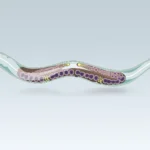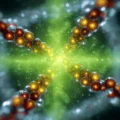The Fanconi anemia (FA) DNA repair pathway is required for the repair of DNA interstrand cross-links (ICLs). ICLs are caused by genotoxins, such as chemotherapeutic agents or reactive aldehydes. Inappropriately repaired ICLs contribute to hematopoietic stem cell (HSC) failure and tumorigenesis. While endogenous acetaldehyde and formaldehyde are known to induce HSC failure and leukemia in FA patients, the effects of other toxic metabolites on FA pathogenesis have not been systematically investigated. Using a metabolism-focused CRISPR screen, we found a synthetically lethal interaction between ALDH9A1 and the deficiency of the FA pathway. Combined deficiency of ALDH9A1 and FANCD2 causes genomic instability, apoptosis, and decreased hematopoietic colony formation. Fanca−/−Aldh9a1−/− mice exhibited an increased incidence of ovarian tumors. A suppressor CRISPR screen revealed that the loss of ATP13A3, a polyamine transporter, resulted in improved survival of FANCD2−/−ALDH9A1−/− cells. These findings nominate high intracellular polyamines and the resulting 3-aminopropanal and acrolein as sources of endogenous DNA damage in patients with FA.









No Comments
Leave a comment Cancel